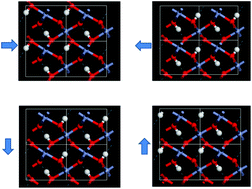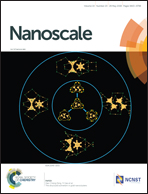Proton transfer ferroelectricity/multiferroicity in rutile oxyhydroxides†
Abstract
Oxyhydroxide minerals such as FeOOH have been a research focus in geology for studying the Earth's interior, and also in chemistry for studying their oxygen electrocatalysis activity. In this paper the first-principle evidence of a new class of ferroelectrics/multiferroics is given. In this class are: β-CrOOH (guyanaite), ε-FeOOH, β-GaOOH, and InOOH, which are earth-abundant minerals which have been experimentally verified to possess distorted rutile structures, are ferroelectric with considerable polarizations (up to 24 μC cm−2) and piezoelectric coefficients. Their atomic-thick layer may possess vertical polarization will not be diminished by depolarizing field because of the formation of O–H⋯O bonds that can be hardly symmetrized. Furthermore, β-CrOOH is revealed to be a combination of a high Curie temperature (TC) in-plane type-I multiferroics and vertical type-II multiferroics, which is strain tunable and may give a desirable coupling between magnetism and ferroelectricity. Supported by experimental evidence on reversible conversion between metal oxyhydroxides and dioxides and their good lattice match that gives convenient epitaxial growth, a heterostructure composed of oxyhydroxides and common metal dioxides (e.g., TiO2, SnO2 and CrO2) may be constructed for various applications such as ferroelectric field-effect transistors and multiferroic tunneling junctions.



 Please wait while we load your content...
Please wait while we load your content...